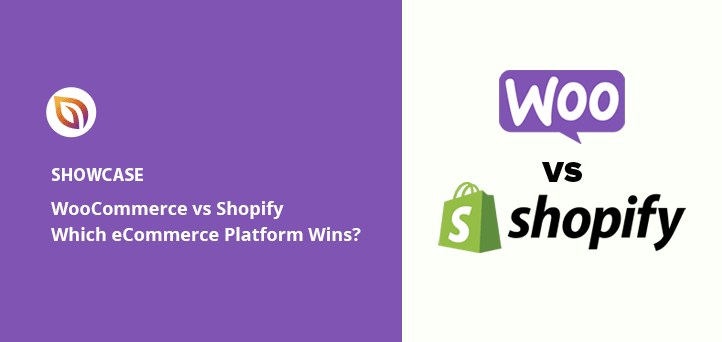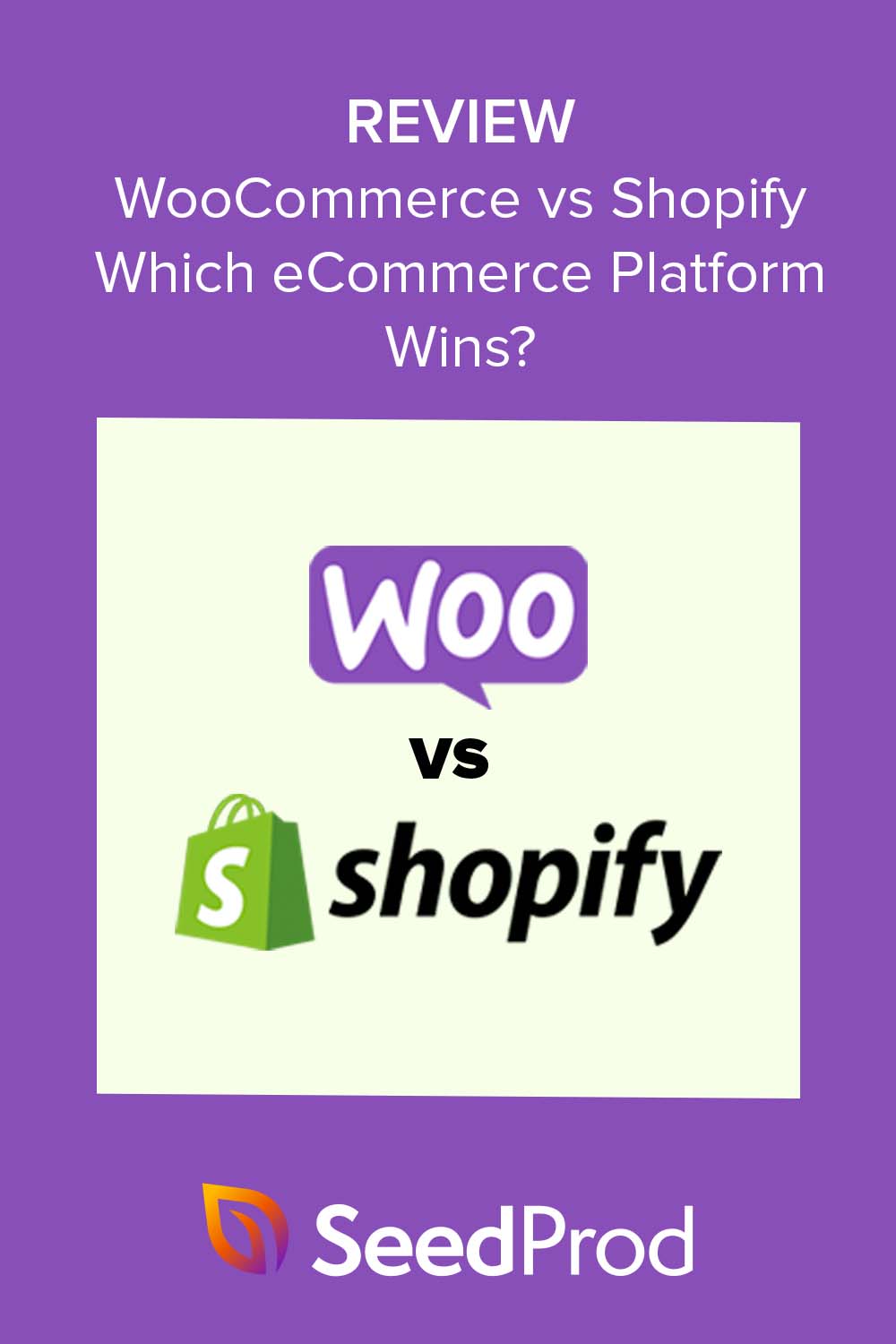Are you starting an online store and struggling to choose between WooCommerce and Shopify? This is a common challenge, as they’re two of the most popular eCommerce platforms, each with its own set of pros and cons. Making the right choice for your business is crucial.
That’s where this WooCommerce vs Shopify comparison comes in. We’ll explore the differences and similarities between these leading platforms, helping you determine the best fit for your specific needs and make an informed decision for your online business.
Because this is a detailed comparison of Shopify and WooCommerce, here’s a table of contents to help you find the section you need:
- WooCommerce vs. Shopify: An Overview
- WooCommerce vs Shopify: Key Considerations
- WooCommerce or Shopify: Which is Cheaper?
- WooCommerce vs. Shopify: Which is Easier?
- Payment Options: Flexibility vs Convenience
- Add-ons and Integrations: Extending Functionality
- WooCommerce vs. Shopify for Dropshipping
- WooCommerce vs. Shopify: Scaling Your Business
- Support Services: Finding Help When You Need It
- WooCommerce vs. Shopify: The Best Platform in 2025
WooCommerce vs. Shopify: An Overview
Before we dive into the details, let’s clarify what makes WooCommerce and Shopify unique in the world of eCommerce website builders. Understanding these differences is key to deciding which platform is right for you.
What Is WooCommerce?

WooCommerce is a free, open-source eCommerce plugin designed to transform your WordPress website into a fully functional online store.
As a self-hosted platform, WooCommerce offers unmatched customization. You have full control over your website’s design (using WordPress themes), functionality (with thousands of WordPress plugins), and data.
Because of its flexibility, WooCommerce has become incredibly popular. It’s now the most widely used eCommerce platform worldwide, even surpassing Shopify in market share.
What Is Shopify?

Shopify takes a different approach. It’s a fully hosted, all-in-one eCommerce platform that prioritizes ease of use. With Shopify, you don’t need to worry about technical details like web hosting, security, or software updates – Shopify handles it all for you.
This makes Shopify an excellent option for beginners or anyone who wants to launch their online store quickly and easily. You get everything you need in one place to start selling online, from customizable Shopify themes to integrated payment processing.
Ultimately, the choice between WooCommerce and Shopify comes down to your priorities: customization and control versus convenience and simplicity. Let’s explore these platforms in detail to help you decide which approach aligns best with your business needs.
WooCommerce vs Shopify: Key Considerations
Making the right decision for your online store starts with understanding the key factors that differentiate eCommerce platforms. As you weigh the pros and cons of WooCommerce vs Shopify, consider the following:
- Pricing: How much will it cost to launch and maintain your online store? Be sure to factor in costs for hosting, themes, plugins/apps, and transaction fees. Shopify pricing vs. WooCommerce pricing can vary significantly, so a thorough analysis is essential.
- Ease of Use: How user-friendly is the platform? Is it suitable for beginners with limited technical experience? WooCommerce vs Shopify for beginners is a common point of comparison.
- Payment Gateways: Which payment methods can you accept? A variety of options is crucial for catering to diverse customer preferences.
- App Integrations: Does the platform seamlessly integrate with essential business tools like email marketing services, analytics platforms, and more?
- Scalability: Can the platform grow with your business? As your sales and traffic increase, you need a solution that can handle the demands. Is WooCommerce or Shopify better for scaling a growing business is a question many entrepreneurs face.
We’ll delve into each of these aspects in our WooCommerce vs Shopify comparison, providing you with the insights you need to choose the best platform for your unique business goals.
WooCommerce or Shopify: Which is Cheaper?
One of the most critical factors in the WooCommerce vs Shopify debate is cost. “Which is cheaper, Shopify or WooCommerce?” is a question on many entrepreneurs’ minds. Let’s break down the pricing structure of each platform:
The Cost of Using WooCommerce
The beauty of WooCommerce is that the core software is free. That’s right, both WordPress (the content management system WooCommerce runs on) and the WooCommerce plugin itself is open-source and free to download.
However, don’t mistake “free” for “no cost.” To get your WooCommerce store up and running, you’ll need:
- WooCommerce Hosting: This is where your website files are stored and is a recurring cost.
- Domain Name: This is your store’s address on the internet (e.g., www.yourstore.com).
- SSL Certificate: Essential for security, ensuring your customer data is encrypted.
While these costs can add up, several specialized WooCommerce hosting providers offer affordable packages that bundle everything you need. For example, Bluehost has plans starting as low as $2.75 per month, making it an incredibly budget-friendly option for starting your online business.

Keep in mind that while WooCommerce itself doesn’t charge transaction fees, your chosen payment gateway (like PayPal or Stripe) will. As your store grows, you might also invest in premium WordPress themes and plugins for enhanced design and functionality, adding to your expenses.
The Cost of Using Shopify
Shopify’s pricing is more straightforward: you pay a fixed monthly fee based on your chosen plan:
- Basic Shopify: $19/month
- Shopify: $49/month
- Advanced Shopify: $299/month

The good news is that Shopify’s monthly fees include hosting, an SSL certificate, and access to basic features. However, you’ll still need to buy a custom domain name.
Shopify also offers a Shopify Lite plan for $5/month, allowing you to add a buy button to an existing website or sell in person using Shopify POS.
It’s essential to factor in Shopify’s transaction fees. While using Shopify Payments (their built-in payment processor) avoids additional transaction fees beyond standard credit card processing rates, opting for third-party payment gateways will incur an extra fee on top of the provider’s charges.
Winner
Deciding whether WooCommerce or Shopify is cheaper depends on your specific needs and circumstances. WooCommerce often has a lower upfront cost, especially for small businesses. However, Shopify offers predictable monthly pricing, which can be appealing to businesses that value simplicity and transparency.
WooCommerce vs. Shopify: Which is Easier?
For many businesses, ease of use is a top priority when choosing an eCommerce platform. Let’s address the common question: Which is easier, WooCommerce or Shopify?
Let’s see how easy each platform is to use next.
WooCommerce Ease of Use
Since WooCommerce is a self-hosted platform, you’ll need to install the WooCommerce plugin, back up your site, manage updates, and keep your store secure. However, there are numerous free and paid WordPress plugins that can help automate these tasks for you.
When it comes to customizing your store, WooCommerce is super flexible. You have complete control over everything and can enhance your site with over 59,000+ WordPress plugins.

That said, WooCommerce doesn’t come with a drag-and-drop page builder. For visual editing functionality, you can use a WordPress page builder like SeedProd or Beaver Builder, but they will add to your overall website costs.
A downside to WooCommerce’s flexibility is the learning curve. You’ll need to be more hands-on with website management and sign up for a merchant account or with services like PayPal or Stripe.
Shopify Ease of Use
Compared to WooCommerce, Shopify is a fully hosted platform, so you won’t need to manage updates or install any extra functionality. You also won’t need to worry about backups, security, performance, or compatibility with add-ons or extensions.
After signing up for Shopify, you can choose from many free Shopify themes. The free themes are sleek and versatile and include all the necessary design features. Alternatively, you can select templates from its paid theme store.
They’ll then guide you through the setup process, including customizing your store and adding products.

Shopify has a drag-and-drop visual interface, and managing product pages, inventories, and sales is just as easy.
The only downside to this easy user experience is the lack of control Shopify gives users over certain aspects of their store. For instance, you can only use Shopify themes, their own development tools, or those available in the Shopify app marketplace.
Winner
We think Shopify is the winner regarding ease of use. Although WooCommerce offers more flexibility and control, Shopify makes the setup process easy and hassle-free without a steep learning curve.
Payment Options: Flexibility vs Convenience
Offering your customers a variety of secure and convenient online payment methods is essential for any successful eCommerce website. So, how do WooCommerce and Shopify stack up in terms of payment gateway options?
WooCommerce Payment Methods
WooCommerce provides an extensive range of payment gateways, giving you the freedom to choose the best options for your business and your customers.

Additionally, WooCommerce supports virtually every other payment service provider imaginable. You can install Square, Amazon Pay, Authorize.net, Alipay, and more integrations.
WooCommerce also supports several less popular and regional payment gateways. With no entry barrier, any payment provider can create and support a WooCommerce payments add-on.
When it comes to payment fees, you’re only charged a transaction fee by your bank or payment gateway. Unless you use the WooCommerce Payments option, WooCommerce will never charge you a percentage fee on credit card payments.
Shopify Payment Methods
Customers can checkout from your Shopify store using various payment methods. Shopify has its own “Shopify Payments” solution powered by Stripe, alongside many of the most popular 3rd-party payment gateways.

That said, Shopify charges an extra 2% transaction fee for every transaction made through 3rd-party gateways. This is on top of the fees charged by the individual payment gateways. As mentioned earlier, you can reduce those fees to 0.05% by upgrading to the Shopify Advanced plan at $299 per month.
Shopify Payments also has credit card fees but no other fees or transactions. The rates start from 2.9% + 30 cents for the basic Shopify plan and get lower for the more expensive plans.
Winner
It isn’t easy to choose a winner when it comes to payment options.
You can save money in WooCommerce by choosing your own merchant account and using a 3rd-party gateway. If you’re a small online store using Shopify Payments, the credit card rates are the same as PayPal and Stripe, so there’s very little difference.
In this case, WooCommerce and Shopify tie on the payment methods criteria.
Add-ons and Integrations: Extending Functionality
As your eCommerce business grows, you’ll need more than just the core features of your chosen platform. Integrations with marketing automation tools, analytics platforms, CRM systems, and other business-critical software become essential for streamlining operations and driving growth.
Let’s explore how WooCommerce and Shopify compare in terms of extending functionality through add-ons and integrations.
WooCommerce Integrations
Since WooCommerce is open-source and built on the WordPress CMS, it has access to over 59,000+ free WordPress plugins and countless more paid plugins.
With these add-ons, you can enhance your WooCommerce site with payment gateways, search engine ranking optimization (SEO), lead generation, performance optimization, social media integrations, and any other feature you can imagine.

There are also many more integrations and add-ons available for WooCommerce than Shopify because of the low barrier of entry. Virtually all 3rd-party tools and services have their own plugins to integrate with your WooCommerce store.
Shopify Integrations
Shopify’s app store takes a more curated approach. The store features a wide array of integrations with popular marketing, sales, and business management tools.

For instance, they offer OptinMonster integration for lead generation, allowing you to reduce cart abandonment and grow your email list. You’ll also find apps for product reviews, search engine optimization, discounts, and more.
The Shopify app store offers free and paid apps. The free apps are typically from third-party services with their own pricing and only integrate your store with their APIs. The pricing for paid add-ons varies, with many apps offering monthly subscriptions.
Winner
In this scenario, the winner is WooCommerce. Shopify has fewer extensions than WooCommerce because it’s much harder to get an app listed in its app store.
On the other hand, WooCommerce has thousands of free and paid integrations, making it much easier to customize overall. Business owners can also hire a web developer to create a custom WooCommerce plugin or integration for their website.
WooCommerce vs. Shopify for Dropshipping
WooCommerce vs Shopify for dropshipping is a popular debate. Dropshipping, a business model where you don’t manage inventory, relies heavily on your eCommerce platform’s capabilities. So, which platform comes out on top for aspiring dropshippers?
Dropshipping using WooCommerce
WooCommerce is a very popular choice for dropshipping businesses. This is mainly because it offers a variety of WooCommerce dropshipping plugins that make the process super easy.
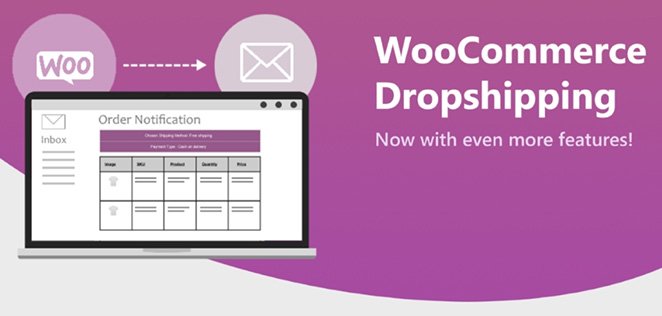
With a dropshipping plugin, you can instantly import products and fulfill customer orders from your website. You can also create a marketplace like eBay, where vendors can sell their products on your website.
Dropshipping using Shopify
When you build a dropshipping website with Shopify, the front of your site will look like any other online store. Users can browse your products, add them to their shopping carts, and make payments like any other online shop.

After that, you’ll need to place the user’s order for shipping, although that will depend on the vendors you use.
Moreover, Shopify integrates with various dropshipping marketplaces like Oberlo, Printify, and AliExpress. That said, each marketplace will have its own shipping, membership, and other fees separate from Shopify, which you’ll need to pay close attention to.
Winner
Choosing between WooCommerce vs Shopify for dropshipping ultimately depends on your priorities. WooCommerce, with its flexibility and potential for cost savings, is an excellent choice for established businesses or those focused on scaling their operations. Shopify provides a more beginner-friendly and streamlined experience, making it suitable for new dropshippers.
WooCommerce vs. Shopify: Scaling Your Business
Is WooCommerce or Shopify better for scaling a growing business?” That’s the million-dollar question for ambitious eCommerce entrepreneurs. As your sales increase and your customer base expands, you need a platform that can handle the growth without compromising performance or breaking the bank.
WooCommerce Scalability
Since WooCommerce is self-hosted, you’ll need to upgrade your hosting plan as soon as you see more website traffic. This is because your starter hosting plan will run out of resources as you grow.
Luckily, there are many ways to handle your growth because you’re in full control of your website. Even though the hosting costs will increase, you’ll have more control over the features you upgrade without paying for resources you won’t use.

You can even use a managed WordPress hosting provider like SiteGround or WP Engine to scale your WooCommerce store more easily.
Shopify Scalability
Given that Shopify handles all the technical aspects of your eCommerce store, you can upgrade your Shopify plan when your business starts growing. Shopify’s infrastructure can efficiently run a growing business without you needing to worry about updates, downtime, backups, and more.
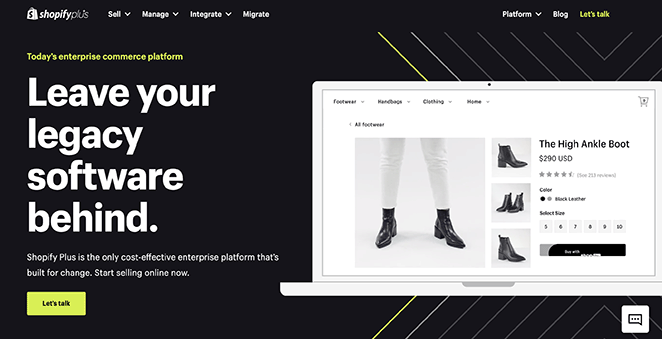
Shopify even offers the Shopify Plus plan, which includes enterprise services. While this will take the pain out of managing your online store, your expenses will grow considerably as you scale. This, however, will be offset by not having to hire an in-house technical team.
Winner
For scalability, we think Shopify is the winner. Despite having more control and flexibility with WooCommerce, many business owners prefer Shopify’s hassle-free approach.
Support Services: Finding Help When You Need It
Running an online store inevitably involves questions and the occasional technical hiccup. When those moments arise, reliable customer support can be a lifesaver. Let’s compare how WooCommerce and Shopify compare in terms of support services.
WooCommerce Support Options
WooCommerce is the most popular eCommerce platform globally, so endless support options are available when you need them.
The official WooCommerce website has detailed documentation, step-by-step guides, and tutorials that help you learn. There are also support forums for help from the WooCommerce support team and other users with expert knowledge.

Additionally, WooCommerce now offers 24/7 chat support with any premium extension or theme purchase from WooCommerce.com.
Yet, because WooCommerce is self-hosted, your hosting provider is responsible for providing support on issues affecting your server. The same is true for 3rd-party WordPress themes, plugins, and extensions.
Shopify Support Options
Since Shopify is fully hosted, they control and know the software inside and out. As such, they provide 24/7 live chat, phone, email, and Twitter customer support.
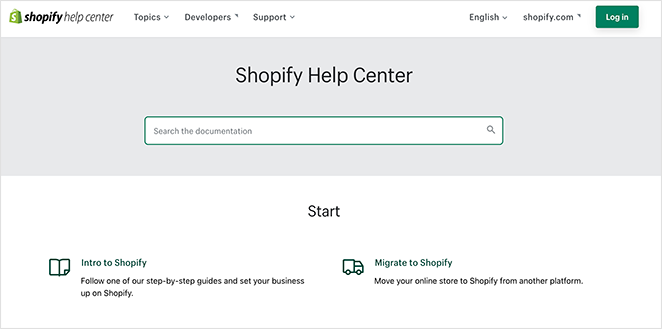
Shopify also maintains detailed documentation, a knowledge base, forums, and video tutorials for users who want to help themselves. Additionally, you can hire a Shopify Expert for extra help and support; however, it doesn’t offer support for third-party tools.
Winner
Shopify is the winner in the support options category. With multiple support options and extensive knowledge of its product, store owners will always be able to find a solution to their issues.
WooCommerce vs. Shopify: The Best Platform in 2025
So, you’ve carefully analyzed the features, pricing, ease of use, and support options for both WooCommerce and Shopify. Now comes the big question: Which eCommerce platform is the best choice for your online store in 2025?
As with most things in life, there’s no one-size-fits-all answer. The best platform depends entirely on your specific needs, priorities, and long-term vision for your business.
WooCommerce is open-source, giving you complete control over your eCommerce site. It costs less to get up and running and has extensive customization options.
The downside is you’ll need to maintain your store yourself, and it has a slight learning curve. Millions of beginner website owners are using it, and they quickly overcome the learning phase.
By comparison, Shopify is much easier to use and doesn’t require installing anything. Their pricing plans are easy to understand, and arranging payment providers is also straightforward.
That said, Shopify doesn’t let you have complete control over your site. The costs can become relatively high, and the upgrade options are limited.
Overall, WooCommerce is the best option if you want a flexible, cost-effective eCommerce solution with complete control over your site. But if you prefer a hassle-free approach to running an online store, Shopify is the best solution.
What Are Some Alternatives to WooCommerce and Shopify?
If WooCommerce doesn’t fit your needs, you can try MemberPress, Easy Digital Downloads, or WPForms as good alternatives. Some popular alternatives to Shopify include Squarespace, BigCommerce, and Wix.
そうだ!
We hope you enjoyed this article and it helped you learn the pros and cons of WooCommerce vs Shopify. You can also read this guide on the best sales funnel builders. Or this one on the best WooCommerce affiliate plugins. We also recommend this guide on how to sell on WordPress without WooCommerce.
お読みいただきありがとうございました!ご質問やご意見がありましたら、お気軽にコメントをお寄せください。
また、YouTube、X(旧Twitter)、Facebookでも、ビジネスの発展に役立つコンテンツを配信しています。

